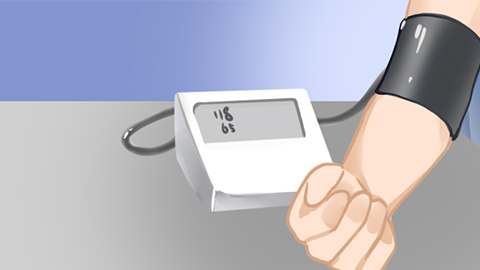What does it mean when diastolic blood pressure is high?
Low pressure refers to diastolic blood pressure. Elevated diastolic blood pressure may be caused by unhealthy lifestyle habits, improper diet, glomerulonephritis, primary hypertension, or primary hyperaldosteronism. Appropriate management strategies can be selected based on specific circumstances. If physical discomfort occurs, it is recommended to visit a hospital promptly and follow medical advice for treatment.

1. Unhealthy lifestyle habits: Long-term late-night activity, high mental stress, and lack of exercise can lead to endocrine disorders, dysfunction of blood vessel contraction, and increased peripheral vascular resistance, resulting in elevated diastolic blood pressure. Improvement strategies include maintaining a regular routine, ensuring 7-8 hours of sleep per night, learning stress-reduction techniques such as meditation and yoga, and engaging in at least 150 minutes of moderate-intensity aerobic exercise weekly, such as jogging or cycling.
2. Improper diet: Excessive consumption of high-salt and high-fat foods increases sodium levels, leading to sodium and water retention. Elevated blood lipids increase blood viscosity, burdening the blood vessels and raising diastolic blood pressure. It is recommended to adjust dietary structure, limit daily salt intake to less than 5 grams, reduce consumption of fried foods and animal offal, eat more fiber-rich foods like oats and celery, and increase intake of high-quality protein.
3. Glomerulonephritis: Inflammation-induced kidney damage can cause sodium and water retention and blood vessel constriction, leading to elevated diastolic blood pressure. Symptoms may also include proteinuria, hematuria, and edema. It is recommended to follow medical guidance in using medications such as captopril tablets, valsartan capsules, and hydrochlorothiazide tablets to aid recovery.
4. Primary hypertension: The exact cause is unclear but may involve genetic and environmental factors. These factors may enhance vascular smooth muscle contraction and sustain increased peripheral vascular resistance, causing elevated diastolic blood pressure. Common symptoms include headache, dizziness, and palpitations. Patients may follow medical advice to use medications such as nifedipine sustained-release tablets, irbesartan tablets, and metoprolol sustained-release tablets to control blood pressure.
5. Primary hyperaldosteronism: Excessive aldosterone secretion by the adrenal cortex causes sodium and water retention, increased blood volume, and blood vessel constriction, leading to elevated diastolic blood pressure. Symptoms often include hypokalemia, fatigue, muscle weakness, and increased nocturnal urination. Follow medical advice to use medications such as spironolactone tablets, eplerenone tablets, and amlodipine tablets to alleviate symptoms.
In daily life, individuals can also learn relaxation techniques, such as deep breathing, meditation, and yoga, to help manage stress and anxiety.
References:
[1] Wang Zhisong, Liu Bo, Han Leng. Analysis of the expression levels and clinical significance of endothelin and matrix metalloproteinase-2 in patients with primary hypertension [J]. Journal of Cardiovascular and Cerebrovascular Disease Prevention and Treatment, 2024, 24(11): 28-31.
[2] Xu Yuanyuan, Jiang Cuiping, Lu Bin. Advances in non-surgical treatment of primary hyperaldosteronism [J]. Practical Hospital Clinical Journal, 2025, 22(01): 1-6.




